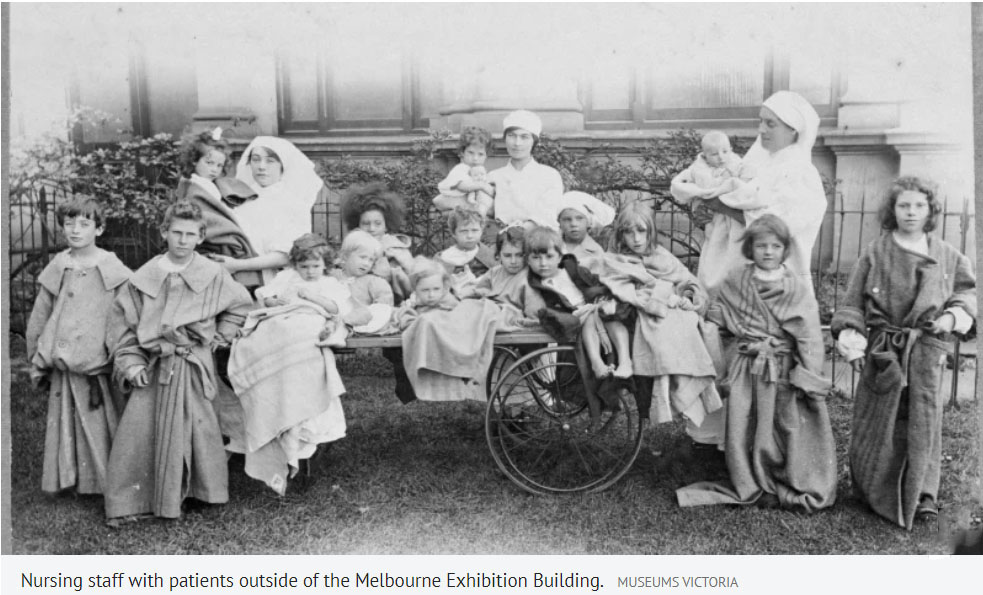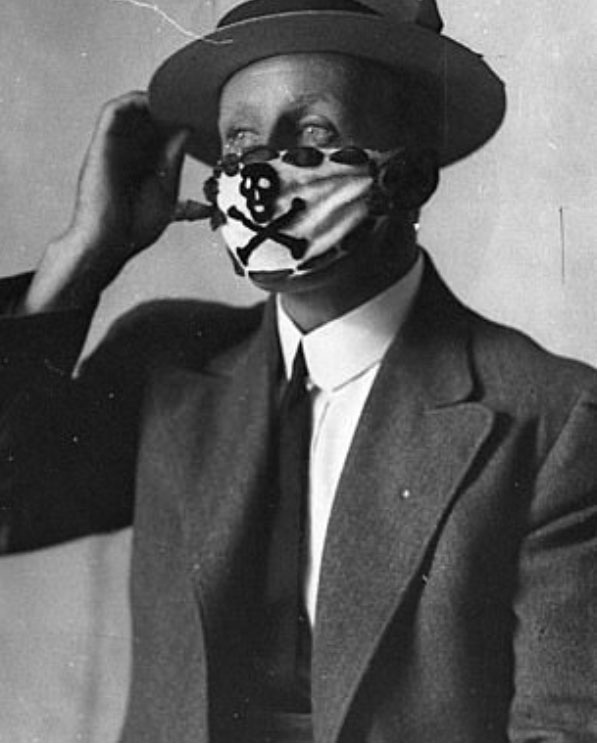Patricia Skehan and Lois Michel.
Rrp $19.95 P.Skehan Publishing

This timely book provides a stark account of the impact of ‘Spanish Flu’ on Australia, a dramatic and alarming revelation of tragic mortality, but with numerous descriptions of heroism across the country. It should come with a warning of graphic content. It will distress many readers, but will captivate them too.
The epidemic killed between 50-100 million people worldwide, and left most Australian families devastated. “Nearly 15,000 people died within a year, yet little is known of its generational impact,” wrote Dr Peter Hobbins from the School of Philosophical and Historical Inquiry, at Sydney University.
Many Australian women joined the Red Cross as Voluntary Aides, while their husbands and sons returned from the battlefields of World War I, the war to end all wars – that didn’t. Their men would survive the war, but succumb to the pandemic.
Jean Curlewis, a young Sydney socialite, volunteered to work at the Walker Emergency Hospital in Concord West. She wrote numerous letters to her family. Jean’s mother, Ethel Turner, was famous for writing Seven Little Australians. Later in this book, much loved Australian poetess, Dorothea Mackellar, would reveal Jean’s tragic fate, while Henry Lawson related life from the depths of his despair.
I transcribed those pages years ago. Recently, in our National archives, I discovered more stories and first-person reports from frontline workers; doctors, nurses, patients, chaplains and teachers; voices from the past speaking of that nightmare, of an alien world that is becoming so familiar to us today. Social distancing, schools and businesses shut, borders closed, wearing masks; death and devastation in our communities. State versus state in lockdown as the economy faltered.
Fully illustrated with graphics from the past. This book is dedicated, with deepest respect, to the frontline workers of today.
. . .
The forward by respected and admired Dame Marie Bashir –
Former, and second longest serving Governor of NSW Professor The Honourable Dame Marie Bashir AD CVO wrote this Foreword to “Frontline of the Pandemic: Australia 1919” . . .
The year 2020 has brought to Australia a range of enormous challenges, not least of which has been the outbreak and impact of the COVID-19 virus, a deadly influenza that has resulted in a global pandemic. For many Australians, this was the first time they had lived through such an event. However, our country had experienced a number of such scourges, including the so-called “Spanish Flu”, which had started in Germany and reached Australian shores in 1919. It was estimated that at least 6 million people across the world died from this devastating illness. Indeed, the death toll was considered to be five times that of the toll of World War I.
Henry Lawson’s eloquent and deeply moving poem, “The Unknown Patient”, leads us into a profound consideration of this disastrous pandemic across Australia, just as the nation was regenerating after so many Australians had served in World War I, so far from their beloved home.
Patricia Skehan’s finely researched book, Frontline of the Pandemic: Australia 1919, provides a stark account of the impact of the “Spanish Flu” on Australia. Her book graphically illustrates the suffering of so many. For instance, she relates one man’s words who, afflicted by the disease, says he has fallen from “bounding with life and health” into “the depth of blackest despair.” Indeed, it is a compelling description with which so many could identify. The book also describes the chilling fact that carpenters were racing to make coffins for the dead and cites one man who paid in advance for his own coffin in expectation of his own death. Frontline of the Pandemic: Australia 1919 certainly provides an exceptionally dramatic and alarming revelation of the tragic mortality rate of Australians, including that of children.
Despite the harrowing personal accounts in Frontline of the Pandemic: Australia 1919, there are also heroic stories from health professionals. Many graduate married nurses returned to work because of the great demand. The Red Cross rapidly organised relief stations which included housekeeping help and food supplies for patients, as well as medical and nursing support. Even a school was converted into a temporary hospital, such was the impact of the influenza. The Thomas Walker Convalescent Hospital at Concord, in Sydney, offered accommodation as an Influenza Hospital to the government for 80 patients which was accepted. Deeply committed nurses and doctors worked tirelessly day and night to assist patients to recover, and to stem the tide of deaths. The book has numerous descriptions of heroism across the country.
By the end of 1919 when Australia had a population of over 5 million, around 10,000 Australians, mostly young adults, had died of the influenza. In giving voice to the many Australians who suffered from the influenza and from those who supported patients, Frontline of the Pandemic: Australia 1919, provides a most important historic resource for all, particularly as Australia navigates the COVID-19 pandemic. Filled with a deep humanity, it is a work that is both distressing and inspiring. It is a chapter in modern Australian history that should never be forgotten.
Yours sincerely,
Professor The Hon. Dame Marie R Bashir AD CVO



